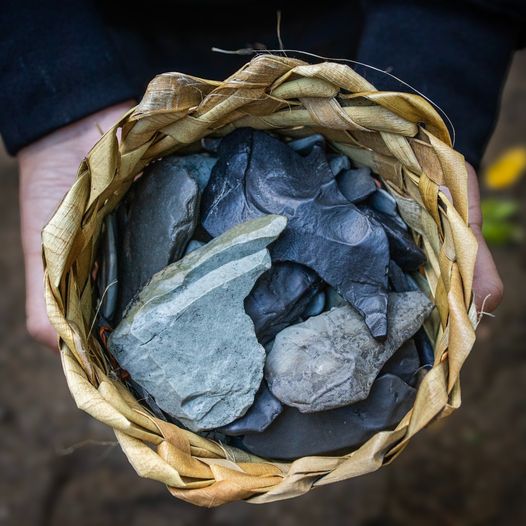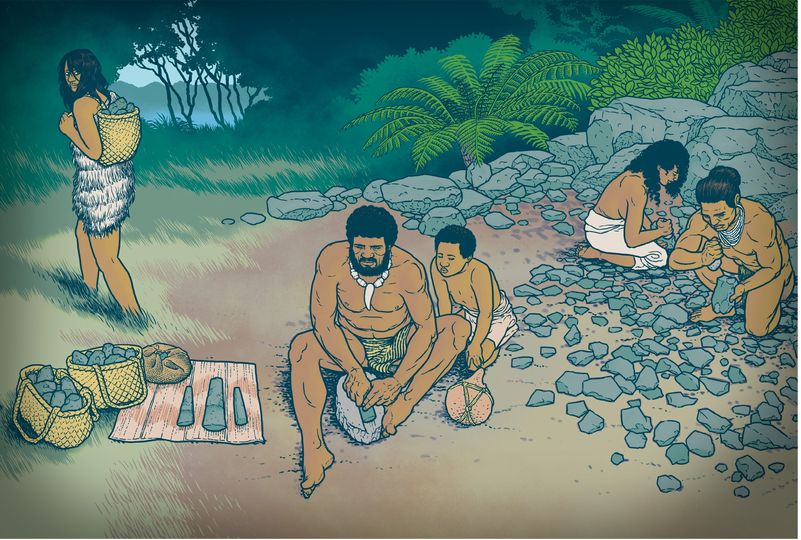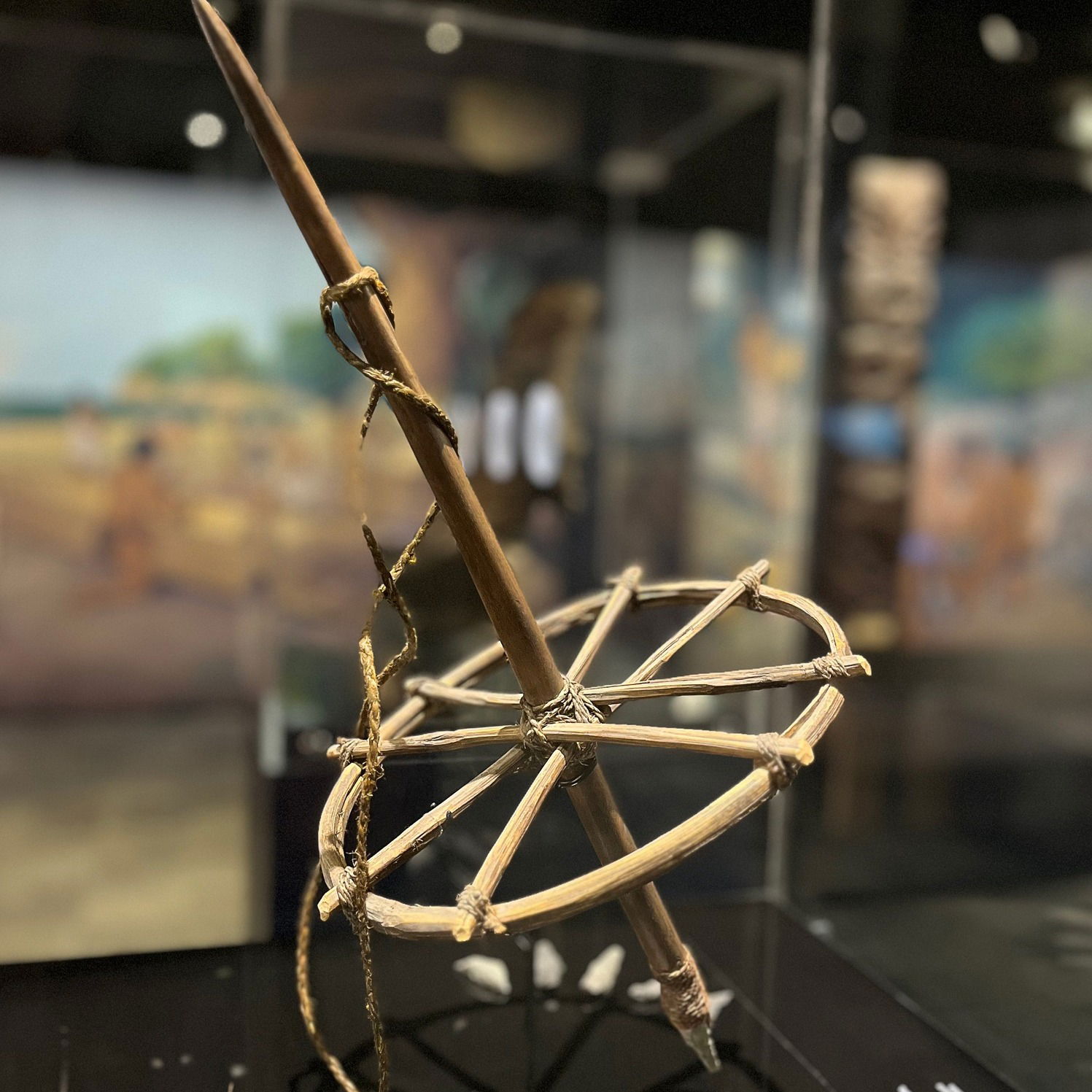Te Wiki o te Reo Māori – Māori Language Week: Nelson Provincial Museum
🌿 Te Wiki o te Reo Māori – Māori Language Week
Today marks the start of Te Wiki o te Reo Māori, and in celebration of Mahuru Māori, we’re excited to highlight elements of our exhibition ‘Te Tuhi o te Whenua: Pakohe Unearthed’ over the next seven days.
This reo rua (bilingual) exhibition honours te reo Māori, tikanga, and the rich legacy of pakohe— a stone essential to Māori in Te Tauihu.
Join us in celebrating the power of te reo Māori and its deep connections to the whenua and our shared history.
Today, we highlight some kupu (words) used for the colours of pakohe
He momo tātiwha o te pakohe o Te Tauihu mai i te hina ki te pango. E rua ngā momo tātiwha matua e mōhiotia ana e Ngāti Kuia, ko te marutea me te uriuri.
Te Tauihu Pakohe comes in a variety of shades from light grey to black. There are two main varieties known by Ngāti Kuia, these are marutea (light shade) and uriuri (dark shade).
📷 Naomi Aporo-Manihera
🌿 Te Wiki o te Reo Māori – Māori Language Week
Rā tuarua – Day Two
Today, we highlight some of the significant pakohe source sites in Te Tauihu
Ko Maungatapu (Moketapu) me ngā awa o te Mahitahi me Te Hoiere, ētahi puna pakohe. Ko ēnei wāhi katoa he wāhanga nui o te umanga pakohe. He wāhi keri pakohe a Maungatapu, e hono ana ki Whakatū mā te awa o Mahitahi. He maha ngā keri pakohe me ngā wāhi mahi i te taha o te awa o Mahitahi, ko ētahi kei raro i te Kurawai. He puna pakohe a Te Hoiere, he huinga hoki o ngā huarahi e hono ana i ngā hapori, i whakamahia mō te hokohoko.
Maungatapu (Moketapu), along with the Mahitahi and Te Hoiere rivers, are interlinked pakohe source sites. These sites were all important parts of the pakohe industry, Maungatapu is a pakohe quarry site and is connected to Whakatū by the Mahitahi River. There were many pakohe quarries and working sites along the Mahitahi River, some of which are located under the Reservoir. Te Hoiere along with being a source site, was also a junction of trails that linked communities and were used for trading.
📷 Hamuera Manihera
🌿 Te Wiki o te Reo Māori – Māori Language Week
Rā tuatoru – Day Three
Today, we shine a spotlight on the Toki
I konei, ka kite koe i ngā wāhanga o te mahi toki pakohe. Ko te toki te tino taonga ohaoha o Te Tauihu mō tōna kaha me tōna ātaahua hei taputapu.
Here, you can see the stages involved in making a pakohe toki. Toki were a prized economic resource of Te Tauihu identified for its strength and beauty as a tool.
Illustration by Motueka-based artist, author and illustrator Mat Tait (Ngāti Kuia, Rangitāne o Wairau, Ngāti Apa ki te Rā Tō)
🌿 Te Wiki o te Reo Māori – Māori Language Week
Rā tuawha – Day Four
Today, we highlight some of the essential tools crafted from pakohe.
E mōhiotia te pakohe mō tōna kaha me tōna pūmau ā, e whakamahingia ana ki te hanga i ngā momo taputapu maha nei. E āhei ana te pakohe te whakarehu me te whakapīata kia pai ake ai tana whakamahinga. He tino pai mō te hanga taputapu tapahi nā te mea, ka taea te hanga me te pupuru i te tapa koi.
Ko ngā taputapu pakohe, pēnei i te ripi, te whao, te toki, te hōrete me ngā matau. He nui ēnei taputapu mō te oranga ia te rā, ia te rā.
Pakohe, known for its strength and durability, is used to make a wide range of tools. Pakohe can be flaked and polished adding to its usability. It is particularly useful for making cutting tools because it can be shaped and hold a sharp edge.
Pakohe tools include ripi (knives, scrapers), whao (chisels), toki (adze), hōrete (drills), and matau (barbs for fishhooks). These tools were essential for everyday survival.
Image of a hōrete (drill)





This Post Has 0 Comments